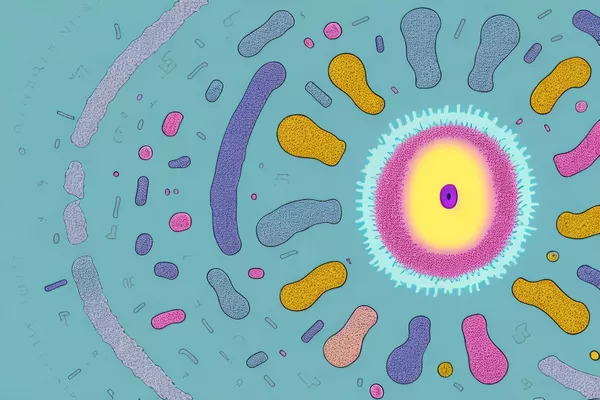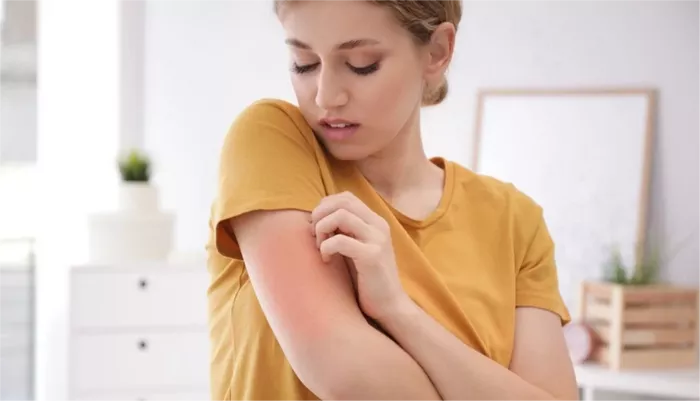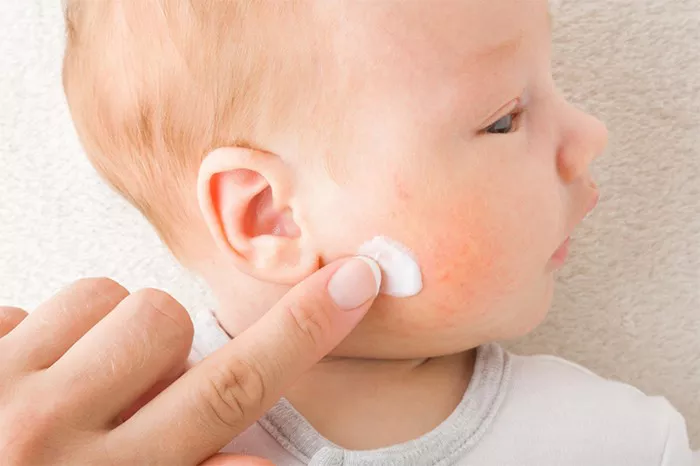Ringworm is a common fungal infection that affects the skin. Despite its name, it has nothing to do with worms. It’s called “ringworm” because it often appears as a circular or ring-shaped rash with raised edges. While ringworm does indeed cause a rash, it is different from other types of rashes, such as those caused by allergies or irritants. This article will explain in detail what ringworm is, how it differs from other rashes, its symptoms, causes, and treatments.
What is Ringworm?
Ringworm is a fungal infection of the skin that is caused by a group of fungi known as dermatophytes. These fungi thrive in warm, moist environments and can infect the skin, hair, and nails. The infection is highly contagious and can spread through direct contact with infected people, animals, or surfaces.
Ringworm gets its name because of its typical appearance. The rash usually starts as a small, red patch and grows in a circular shape with a raised border. The center of the rash often clears up, leaving a ring-like appearance. The rash may be itchy and may cause discomfort, but it is not usually painful.
How Does Ringworm Spread?
Ringworm is highly contagious and can spread in several ways:
Direct contact: The most common way to contract ringworm is through direct skin-to-skin contact with an infected person or animal. For example, if you touch someone’s skin who has ringworm or petting an infected animal, you can catch it.
Contaminated surfaces: Ringworm spores can live on surfaces for a long time. Touching contaminated items like towels, combs, or gym equipment can also lead to infection.
Contact with soil: Fungi that cause ringworm can also be found in soil. People who work with soil or who walk barefoot in places where the fungus is present are at an increased risk.
Symptoms of Ringworm
Ringworm symptoms can vary depending on the area of the body that is affected. Common symptoms include:
Circular rash: The hallmark of ringworm is a circular or ring-shaped rash. The rash is typically red, scaly, and has raised edges. The center of the rash may appear normal or slightly lighter in color.
Itching: The rash is often itchy, especially as it spreads or when it is irritated.
Dry, flaky skin: The skin around the rash may become dry, cracked, and flaky.
Blisters: In some cases, blisters may develop on the rash, adding to discomfort.
Hair loss: If ringworm affects the scalp or beard area, it can cause hair loss in the affected area, which may lead to bald patches.
Types of Ringworm
There are different types of ringworm, depending on where the infection occurs. The symptoms and appearance of the rash may vary slightly for each type:
Tinea corporis: This is the most common form of ringworm, affecting the body. It usually appears as a ring-shaped rash on the arms, legs, or torso.
Tinea pedis (Athlete’s foot): This form of ringworm affects the feet. It often causes redness, itching, and scaling between the toes and on the soles of the feet.
Tinea cruris (Jock itch): This type of ringworm affects the groin area. It is common in athletes and causes a red, itchy rash in the folds of the thighs and genitals.
Tinea capitis: This affects the scalp and is most common in children. It can lead to bald patches and dandruff-like flakes.
Tinea unguium (Nail fungus): Ringworm can also infect the nails, causing them to become discolored, thickened, and brittle.
Tinea barbae: This is ringworm that affects the beard area in men, causing red, inflamed patches on the face.
How is Ringworm Different from Other Rashes?
Although ringworm can resemble other types of rashes, there are key differences that can help distinguish it from other skin conditions. Here are a few ways in which ringworm is different from other rashes:
Appearance: Ringworm typically appears as a circular or ring-shaped rash with clear centers and raised edges. Many other rashes do not have this distinctive appearance. For example, eczema may cause patches of dry, inflamed skin without the circular shape seen in ringworm.
Itching: While most rashes can be itchy, ringworm is often more intensely itchy, particularly around the raised edges of the rash.
Scaling and Flaking: Ringworm rashes tend to be scaly, especially in the center. Other types of rashes, like contact dermatitis or eczema, may not have the same type of scaling.
Cause: The main cause of ringworm is a fungal infection, whereas many other rashes are caused by allergens, irritants, or viruses. For example, chickenpox is caused by a virus, and eczema is often related to genetic factors or environmental triggers.
Location: Ringworm can appear anywhere on the body, but certain types are more common in specific areas. For example, athlete’s foot affects the feet, while jock itch affects the groin area. In contrast, other rashes, like hives or psoriasis, can occur anywhere on the body without being specific to one area.
How to Treat Ringworm
Treating ringworm typically involves the use of antifungal medications. These medications help to kill the fungi causing the infection and prevent it from spreading. There are several options available for treating ringworm:
Topical antifungal creams: For mild cases of ringworm, over-the-counter antifungal creams, powders, or ointments are often effective. These products contain ingredients such as clotrimazole, miconazole, or terbinafine.
Oral antifungal medications: For more severe or widespread cases of ringworm, a doctor may prescribe oral antifungal medications such as terbinafine, fluconazole, or itraconazole.
Antifungal shampoos: If the scalp is infected, special antifungal shampoos can be used to treat the infection and prevent hair loss.
Home remedies: Some people use natural remedies like tea tree oil, garlic, or coconut oil to treat ringworm. However, these should not be used as a substitute for professional treatment, as they may not be as effective as antifungal medications.
Preventing Ringworm
Prevention is key to avoiding ringworm, especially since it is so contagious. Here are some tips to help prevent the spread of ringworm:
Avoid direct contact with infected people or animals: Since ringworm spreads through skin-to-skin contact, avoid touching someone with an active infection or petting an infected animal.
Keep your skin clean and dry: Fungi thrive in warm, moist environments, so keeping your skin dry and clean can help prevent ringworm. Dry your skin thoroughly after bathing or swimming.
Wear proper footwear: When using public showers or locker rooms, wear sandals or flip-flops to avoid contact with contaminated surfaces.
Don’t share personal items: Do not share towels, combs, razors, or other personal items that can carry fungal spores.
Treat pets for ringworm: If you have pets, check them for ringworm and treat any infections promptly to prevent the spread to humans.
When to See a Doctor
If you have a rash that resembles ringworm and it doesn’t improve with over-the-counter treatments, or if it spreads quickly, it’s important to see a doctor. A healthcare provider can confirm the diagnosis and prescribe stronger antifungal medications if necessary. You should also seek medical help if the infection affects your scalp, nails, or other sensitive areas.
Conclusion
Ringworm is a fungal infection that causes a rash, but it is different from other types of rashes. It is characterized by a circular, red, and scaly rash, often with raised edges and a clear center. Although it is a common condition, it is highly contagious and can spread easily through direct contact with infected people, animals, or contaminated surfaces. Treatment typically involves antifungal medications, and prevention includes keeping the skin clean and dry, avoiding contact with infected individuals, and taking precautions in public areas. With proper treatment and prevention, ringworm can be managed and eliminated effectively.
Related topics:


























